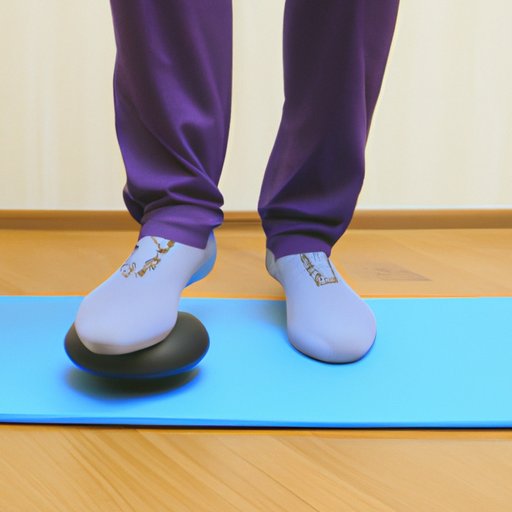Introduction
Tripping is something most of us have experienced at some point in our lives. Whether it’s due to a misstep on the sidewalk or an unexpected obstacle in our path, tripping can be embarrassing, painful, and even dangerous. Fortunately, there are steps we can take to help prevent tripping from happening in the first place.
First, let’s define what tripping actually is. Tripping is when the feet unexpectedly come into contact with an object or surface that causes the person to lose their balance. This can result in them falling down or stumbling forward. Tripping can occur for a variety of reasons, such as walking on uneven surfaces, wearing inappropriate shoes, being distracted, or having weak core muscles.
Practice Balance Exercises
One of the best ways to avoid tripping is to practice balance exercises. According to a study conducted by the University of Wisconsin-Madison, “balance exercises are important for reducing falls and injuries related to falling.” Balance exercises help strengthen the body’s stabilizer muscles, which are responsible for maintaining balance. These exercises also help improve coordination and agility, making it easier to respond quickly to unexpected obstacles.
There are a variety of balance exercises that can be done. One example is the single-leg balance exercise. To do this exercise, stand on one leg with the other leg bent slightly behind you. Hold this position for 30 seconds and then switch legs. Another example is the heel-to-toe walk. To do this exercise, stand up straight and step forward with one foot, placing the heel just in front of the toes of the other foot. Walk forward in this manner, focusing on keeping your balance. Try to do 10 steps before switching directions.
Wear Appropriate Footwear
Another way to reduce the risk of tripping is to wear appropriate footwear. Different types of shoes provide different levels of support, cushioning, and stability. For example, running shoes are designed for activities that involve a lot of movement, whereas dress shoes are better suited for standing or walking for extended periods of time.
When choosing shoes, look for ones that have good arch support and cushioning. If possible, try them on before purchasing them to make sure they fit properly. Also, pay attention to the tread on the bottom of the shoe. Shoes with more tread provide better traction, which can help prevent slipping and tripping.
Pay Attention to Your Surroundings
It’s also important to pay attention to your surroundings when walking. Being aware of your environment can help you spot potential hazards before they become a problem. It also allows you to react faster if you do trip or stumble. A study conducted by the University of California found that “people who are more aware of their surroundings are less likely to suffer from accidents related to tripping.”
To stay alert, try to focus on where you’re going and what’s around you. Take note of changes in terrain and keep an eye out for obstacles like rocks or sticks. If you’re walking in an unfamiliar area, consider using a map or GPS device to help you navigate.
Avoid Distractions While Walking
Distractions can also increase the risk of tripping. Talking on the phone, listening to music, or texting while walking can all take your focus away from the task at hand. A study conducted by the University of Iowa showed that people who are distracted while walking are twice as likely to trip than those who are focused on the task.
To avoid distractions while walking, turn off your phone or put it on silent. If you’re listening to music, keep the volume low enough so you can still hear your surroundings. Also, try to limit conversations with friends or family members to a minimum. The key is to stay aware of your surroundings and focus on the task at hand.
Strengthen Your Core Muscles
Finally, strengthening your core muscles can help reduce the risk of tripping. The core muscles are responsible for providing stability and balance to the body. A study conducted by the University of Washington found that strengthening these muscles can help improve balance and reduce the risk of falling.
There are a variety of core exercises that can be done. One example is the plank. To do this exercise, get into a push-up position and hold yourself up using your forearms and toes. Make sure to keep your back straight and hold the position for 30 seconds or longer. Another example is the side plank. To do this exercise, lie on your side with the elbow of your bottom arm directly beneath your shoulder. Lift your hips off the ground and hold the position for 30 seconds or longer.
Conclusion
Tripping can be embarrassing, painful, and even dangerous. However, there are steps we can take to reduce the risk of tripping. This includes practicing balance exercises, wearing appropriate footwear, paying attention to our surroundings, avoiding distractions, and strengthening our core muscles. By taking these steps, we can help ensure that tripping doesn’t become a regular occurrence.
(Note: Is this article not meeting your expectations? Do you have knowledge or insights to share? Unlock new opportunities and expand your reach by joining our authors team. Click Registration to join us and share your expertise with our readers.)
